4 Step Fertilizer Program – Save time and money with our specially priced 4 Step Annual Fertilizer Program. This program offers up to an 8% savings over purchasing the products individually through the year. It is available in either 5,000 sq. ft. or 10,000 sq. ft. coverages, and includes instructions for when to apply. It includes, with the first (Early Spring) application pre-emergent crabgrass control with DIMENSION. This program does not include broadleaf weed control because we recommend this be done with liquid TRIMEC herbicide. We’ll advise the timing of the application of TRIMEC in Newsletters and in the store.
Japanese Stiltgrass Control (JSG) – Most of you may have never heard of Japanese stiltgrass, but it is an annual grassy weed (like crabgrass) that germinates earlier than crabgrass, is shallow-rooted, grows best in woodlands or along wooded sections of lawns in heavily shaded and/or damp areas. Stiltgrass looks like crabgrass but its pale green leaves have a silver stripe running down the center of the leaves. It is rapidly becoming a difficult to manage annual grassy pest that starts in March, grows actively through the summer, and then dies in the mid-fall. Because it is an annual grassy weed, it is well managed by DIMENSION crabgrass control, but because the seeds start germinating in March, your DIMENSION must be applied earlier (in March), and in heavy infestations this DIMENSION application should be repeated in May. This second application will also ensure that late-germinating crabgrass will also be stopped. If you have questions, come in to the store and discuss them with us.
Broadleaf Weed Control (Cool Season Weeds) in March – Perennial weeds (live from year to next year) can only be killed when they are actively growing. Included in the group that is actively growing in March and early April is ground ivy, wild violets, chickweed, veronica, wild onions/garlic, and more. Not included in this group are dandelions and clover. They (and others) will be actively growing in late April, May and beyond. Perennial weeds are removed by herbicide absorption through actively growing leaves and shallow roots. Liquid TRIMEC herbicide is the most effective broad-spectrum broadleaf available today. Whether it is spot sprayed on individual weeds or applied over the whole lawn, TRIMEC works best. We do NOT recommend that granular herbicides, such as weed & feed products be used. Ever. The herbicide cannot be effectively absorbed by leaves or roots when applied in granular form.
Seeding in March – In a word: DON’T. Seeding at any time in the spring is strongly advised against for several reasons: you can’t apply either pre-emergent crabgrass control products or broadleaf weed control products until AT LEAST 2-3 months after seeding; and seed germination in the spring will be slow and incomplete because germination depends on soil temperature. And soil temperature will not be high enough until the beginning May at the earliest. Seeding is best done between mid-August and late October, the earlier, the better, when soil and air conditions are ideal for fast and complete germination.
Fertilizing Lawns in March – We hope most of you fertilized your lawns last October, November, or early December. If so, you don’t need to feed your lawns again until mid-late April-May (hopefully in combination with DIMENSION pre-emergent crabgrass control). If you did NOT feed the lawn after September and would like to get it as green as your neighbors who DID a late-fall feeding, wait until the grass starts to grow before feeding it. Feeding does NOT get grass growing early. Dormant grass can’t absorb the nutrients.
Mowing Lawns in March – If your final mowing last fall was after Thanksgiving, your lawn is probably pretty neat and even now. It’ll really start greening up in late March or shortly thereafter. Start regular mowing then. If you ceased mowing in early November or before, last fall, and the lawn looks long and tan, and uneven now, set your mower 1 notch higher than you normally cut, cut the entire lawn once, rake clippings if necessary, and then don’t mow again until the grass turns green and starts growing.
Liming Lawns in March – Regular liming (once or twice a year) of lawns grown in acidic soils (here), helps neutralize the acidic soil, which, in turn allows fertilizers to work better by releasing the macro-nutrients (N, P, K) and allowing roots to absorb them more readily. Because lime is a soil conditioner, not a fertilizer, it matters not at all whether the grass is dormant or growing actively. Lime now with one of our several lime products, all of which are clean and easy to use.
